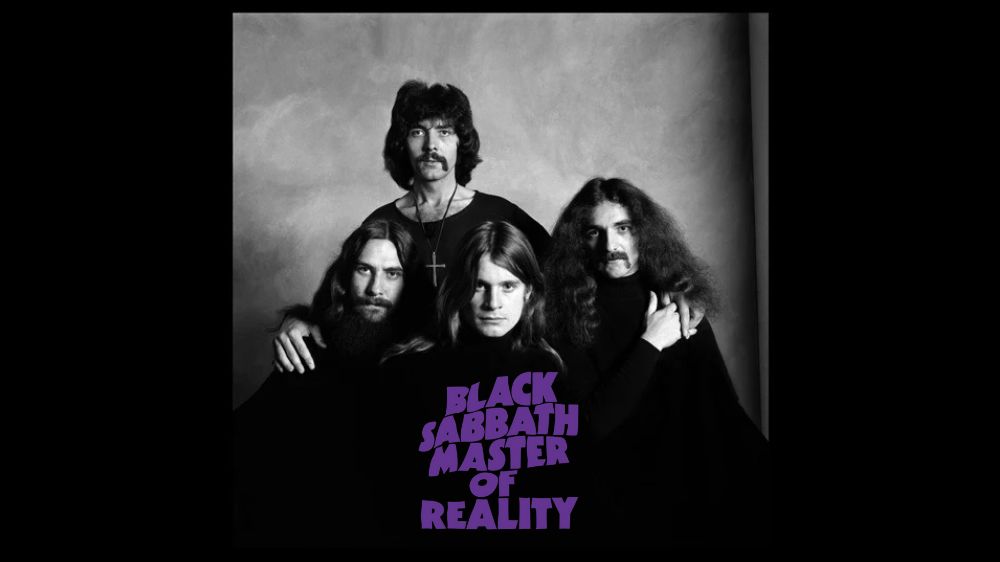When Master of Reality hit the shelves on 21 July 1971, few could predict how this murky, downtuned record would reshape heavy music. Marking a stark departure from fast-paced rock, Black Sabbath distilled their sound into an unrelenting monolith of groove, gravity and grit. Across its eight tracks, themes of war, faith and altered consciousness converge in a claustrophobic atmosphere that laid the bedrock for doom metal, stoner rock and sludge for generations to follow.
A Turning Point in Tone
By early 1971, Black Sabbath had already stunned audiences with their eerie debut and the taut riffs of Paranoid. Yet Tony Iommi and Geezer Butler felt compelled to burden their riffs with more weight. At Island Studios in London, between February and April, they retuned guitars and bass down a whole step, or even more, to generate a crushing low end. This tuning deepened the band’s sound, giving the songs a weight and intensity rarely heard in rock at the time. Producer Rodger Bain captured the band playing live around a single microphone cluster, preserving the raw interplay of Iommi’s churning riffs, Butler’s buzzing bass, Bill Ward’s thunderous drums and Ozzy Osbourne’s urgent vocals.
Conflict, Faith and Chemical Escape
By 1971 the Vietnam conflict, organised religion’s waning authority and the countercultural embrace of psychoactive substances had permeated global consciousness. Black Sabbath’s prior albums had introduced elements of occult imagery and anti-establishment sentiment. The recording sessions coincided with both heightened anti-war demonstrations and evolving attitudes towards drug use among young adults.
Master of Reality tackles weighty themes through its music and lyrics. Consider the following tracks as illustrations of these themes:
“Children of the Grave”
Written during Black Sabbath’s US tour at the height of the Vietnam War, this song picks up the anti-war message of “War Pigs” and turns it up a notch. Bill Ward still talks about seeing veterans in wheelchairs pushing their way to the front of the stage when the band played it live. The pounding drums and driving riffs made it feel like a call to action.
“After Forever”
On this track, Geezer Butler points a critical eye at organised religion, asking whether its rituals and teachings actually help people or just give them false comfort. The song weaves chant-style vocal lines into heavy, down-tuned riffs, showing the band wasn’t afraid to take on serious questions even as they got heavier.
“Sweet Leaf”
The album opener begins with Tony Iommi’s authentic cough, captured mid-take after sampling cannabis, signalling the song’s unvarnished honesty. Its downtuned riff supports lyrics that both celebrate the herb’s creative spark and acknowledge its potential for dependency.
Beyond the Riffs
While the album’s sonic identity often steals the spotlight, its compositions reveal careful craftsmanship. “Into the Void” unfolds over nine minutes of shifting grooves, balancing jam-style expansiveness with precise transitions. “Lord of This World” layers descending guitar motifs beneath prophetic lyrics that blur the line between preacher and madman. Banc’s live-in-studio approach meant the band tackled many takes until every accidental stumble and spontaneous flourish felt essential to the track’s power.
Despite Sabbath’s growing reputation, Master of Reality’s recording sessions were fraught with tension. The band’s increasing indulgence in alcohol and drugs sometimes derailed takes, forcing moments of stasis as they waited for sobriety or inspiration to return. Yet these same vices fuelled the album’s raw authenticity: each hiss, cough and feedback squeal testifies to a band pushing its boundaries, even if it meant teetering on collapse.
Reception, Legacy and Influence
Upon release, Master of Reality confounded critics who expected faster tempos and snarling vocals. Its deliberate pace and oppressive heft earned mixed early reviews but quickly found an ardent underground following. The album went gold in both the UK and US within months, signalling that heavier, slower music could find a wide audience.
In the decades since, Master of Reality’s downtuned grooves have become foundational. Bands such as Sleep, Saint Vitus, Electric Wizard and Kyuss acknowledge its influence on sludge and stoner rock. Even modern doom acts and metalcore bands trace their low-end obsession back to Iommi’s pioneering tuning experiments. Its eight tracks appear on countless “greatest heavy albums” lists, each riff still capable of rattling speakers and skulls alike.
Master of Reality remains vital because it does more than sound heavy: it feels elemental.
Master of Reality remains vital because it does more than sound heavy: it feels elemental. Its themes of violence, belief and escape resonate across eras. Its sonic palette invites listeners into darkness rather than offering light. Half a century on, the album still commands attention: its riffs are replayed in garages worldwide, its songs reinterpreted by emerging artists, and its atmosphere invoked in countless genre hybrids.
A record that dared to descend into the abyss and emerged forever changed.
For anyone seeking the origin of doom’s slow storm or simply the raw force of unfiltered guitar power, Master of Reality stands as the essential blueprint; a record that dared to descend into the abyss and emerged forever changed.
